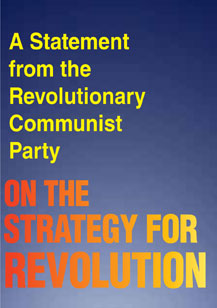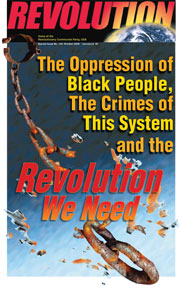From A World To Win News Service
A Diversity of Climate Protest Views and Activities Counter CoP21 in Paris
December 21, 2015 | Revolution Newspaper | revcom.us
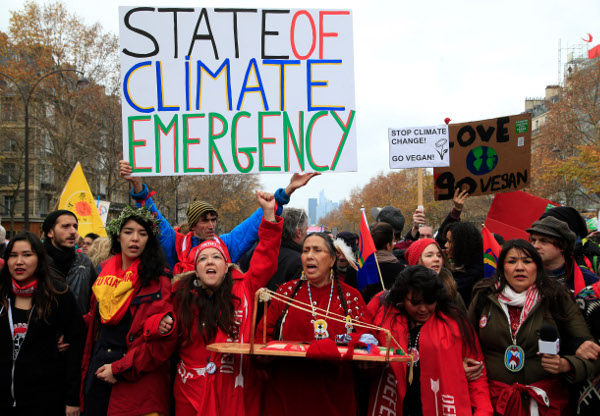 Paris, December 12. AP photo
Paris, December 12. AP photo
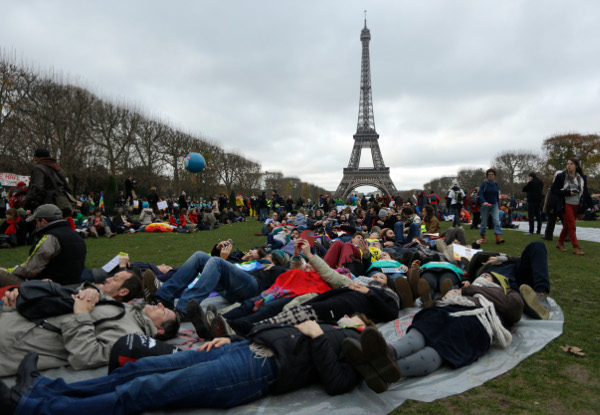
Die-in during protest near the Eiffel Tower, Paris, December 12. AP photo
December 14, 2015. A World to Win News Service. As the clock struck noon on December 12, at a "red line" protest representing the temperature line that our warming planet must not cross, thousands of climate demonstrators assembled dressed in red or sporting red umbrellas. In the avenue stretching behind the Arc de Triomphe in Paris, they unfurled giant banners and long red ribbons of fabric, some laden with red tulips in a tribute to the victims of climate change, marching up and down in an area police had sealed off.
Afterwards on the way to the Eiffel Tower, some 2,000 people occupied a bridge over the Seine River in a well-prepared civil disobedience action, surrounding themselves with giant inflatable blocks. On the Champ de Mars behind the Tower, many thousands formed a human chain in the afternoon, followed by a rally. Numerous lively banners in English and French denounced the climate crisis, as people from many other European countries streamed in to join, along with a small "army" of Danish polar bears. Organizers say that more than 20,000 people joined in climate protests on December 12.
While 24 environmental activists continued to be held under "preventive" house arrest, the French ruling class ended up authorizing the human chain and what were billed as "climate of peace" activities. However, aside from a few-second glimpse, most French mainstream media systematically blocked reporting of the December 12 protests. Instead, stealing the hour and the moment, French Foreign Minister Laurent Fabius, presiding over the UN climate summit in Paris, announced at noon that a new CoP21 document had been finalized. French and world media focused entirely on this self-congratulatory fest, revelling in the achievement of a certain uneasy consensus among countries' rulers to make promises about reducing carbon emissions. English media emphasized the ambiguity of whether all nations are bound by the agreement, while the French President Hollande crowed that it was "historical, universal and binding." This agreement must be carefully analyzed, but numerous climate experts and activists have already begun to debunk it as anything but a plan to cut down on the use of fossil fuels—only one dimension of the planet-wide disaster underway.
Despite the difficulties created by the state of emergency and ban on demonstrations declared after the November 13 massacre in Paris, an enthusiastic international team of supporters of Bob Avakian's new synthesis traveled to Paris to distribute nearly 8,000 leaflets and debate the solution to the climate problem with the thousands of climate activists gathering there between November 29 and December 12.
Information is still coming in to AWTW News Service reporters who also went to Paris during CoP21. Many activists were highly mobilized to oppose the official UN climate summit process, while others conveyed messages designed to pressure leaders to act responsibly—emphasizing especially the diverse and dangerous effects of the climate crisis and its impact on people around the world. The official CoP21 organizers had created a "civil society" space to allow a select number of religious, academic, NGO, and business groups to express their views near the summit site, itself of course off limits to the public. Exhibits and conferences presented green technologies, water and desertification problems, the dangers of fracking, agro-ecological innovations, forest and ecosystem recovery initiatives, the effect of climate warming on women farmers, climate-induced migrants, land degradation, urban agriculture, and a host of other issues. Some workshop attendees-turned-demonstrators managed to sneak in a few unexpected actions inside this space, including an unauthorized red line stretching outside the summit doors on the final day, and a die-in by Black Lives Matter sympathizers who wore surgical masks and chanted, "We can't breathe, racial justice now!” a welcome and rowdy eruption in the otherwise overly proper atmosphere in this “green zone,” where attendees could charge their cell phones by pedaling on stationary bikes.
At the same time, far from the summit site, a coalition of 130 NGOs, together with various groups involved in some level of climate activism, took part in a week of meetings, film projections, plays, concerts, and a series of happenings by sculpture artists in various locations in Paris and a weekend Village of Alternatives and a People’s Climate summit held in a nearby suburb. The AntiCop food collective fed people for over two weeks in makeshift vegetarian food lines in the streets. An artists' collective turned over its abandoned factory space to climate activists to produce brightly colored signs and banners. Clowns were reportedly hauled in for questioning by police for street actions inciting people to laugh. Debate in various languages went on everywhere.
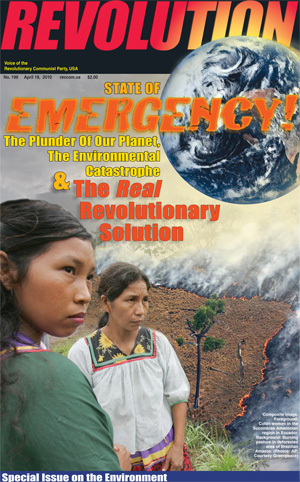
This Revolution special issue focuses on the environmental emergency that now faces humanity and Earth’s ecosystems. In this issue we show:
- the dimensions of the emergency...
- the source of its causes in the capitalist system, and the impossibility of that system solving this crisis...
- a way out and way forward for humanity—a revolutionary society in which we could actually live as custodians of nature, rather than as its plunderers.
Read online....
Also available in brochure format (downloadable PDF)
A prominent figure in these activities was the Canadian writer Naomi Klein, who one evening also shared a podium with British Labour Party leader Jeremy Corbyn. People listened attentively to these speakers who urged them to continue the struggle to stop polluting corporations, maintain pressure on political leaders, replace oil and gas jobs with care industry and "climate jobs," and to expand local solutions and community control over energy choices, as has been implemented in some regions in Germany. They argued that building a humanist movement combining trade union activism with food sovereignty, human and labor rights, as well as environmental justice causes can work together with the goal of greening and humanizing the current system. This message appealed to and reinforced colossal illusions that the Earth can be protected if people remain vigilant and push for gradual change, called "energy democracy," which in fact was what Klein meant by “changing everything.”
There were many resistance actions during the two-week period by people who directed their anger, energy, and understanding of the urgency towards the state and its various representatives, rather than focusing on these narrower conceptions of tinkering with a system many think is out of control. The message “Only revolution can save the planet” that floated alongside some of these activities attracted many dozens of discussions with activists, not to mention the hundreds of people who wanted to photograph the large banner with the globe breaking the chains. In addition to the revolutionaries, many groups also highlighted the current migrant/refugee crisis and France’s ultra-hypocritical role, the war in Syria, and many other crimes of the system and its rulers who were debating the fate of the planet in the north of Paris.
Peddlers of Klein-type reformist thinking aside, the word “system” was constantly used and chanted, but revolutionaries talking with people found that this very rarely meant the capitalist-imperialist system as a whole that is responsible for the current crisis. People understood and sharply targeted various aspects of capitalism, but were not often clear on its functioning, beyond the notion that it puts profit before people. Others advocated a different energy system, a more democratic system, or more attentive leaders leading the system. In the course of intervening in public meetings and debates, holding a lively and busy literature stand at the Village of Alternatives, participating in several different mobilisations during the two weeks of protest, as well as organizing their own events, these views challenged the team of new synthesis supporters to explain why revolution and a different communist future really are necessary—not only to deal with the environment, but to solve the entire range of social problems facing humanity.
Many activists asked what kind of revolution was meant, how we would make one, couldn’t it be peaceful like many of the climate organizers were arguing, why if China used to be revolutionary did it become a big capitalist polluter, and won’t the growing climate awareness and movement be sufficient to influence decisions to implement green energy sources. A number of “defense zone” youth (active in trying to block the construction of a dam in south-western France and defending their encampment from the police, who killed a young man just over a year ago) were very interested in talking about revolutionary change. At the same time, they argued that immediate action is more useful, a commonly heard view that tends to separate such resistance from building a movement for revolution. In taking up the challenge of planting a revolutionary pole in the midst of this diverse, creative, and energetic movement, the team gained new insight into the political terrain influencing it as well as the constantly renewed (and renewable) illusions holding back those who could develop from this environment battle into revolutionary activists.
See also: “Stop the whole system wrecking the planet: this means revolution!”
In Paris, Brussels, Berlin, and London, revolutionaries distributed this text in French, English, German, Farsi, and Turkish during the two weeks of climate protests against the CoP21 in Europe. Signed Planet Resistance, it is dated 16 November 2015.
Volunteers Needed... for revcom.us and Revolution
If you like this article, subscribe, donate to and sustain Revolution newspaper.

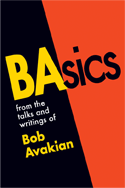 This system and those who rule over it are not capable of carrying out economic development to meet the needs of the people now, while balancing that with the needs of future generations and requirements of safeguarding the environment. They care nothing for the rich diversity of the earth and its species, for the treasures this contains, except when and where they can turn this into profit for themselves....These people are not fit to be the caretakers of the earth.
This system and those who rule over it are not capable of carrying out economic development to meet the needs of the people now, while balancing that with the needs of future generations and requirements of safeguarding the environment. They care nothing for the rich diversity of the earth and its species, for the treasures this contains, except when and where they can turn this into profit for themselves....These people are not fit to be the caretakers of the earth.